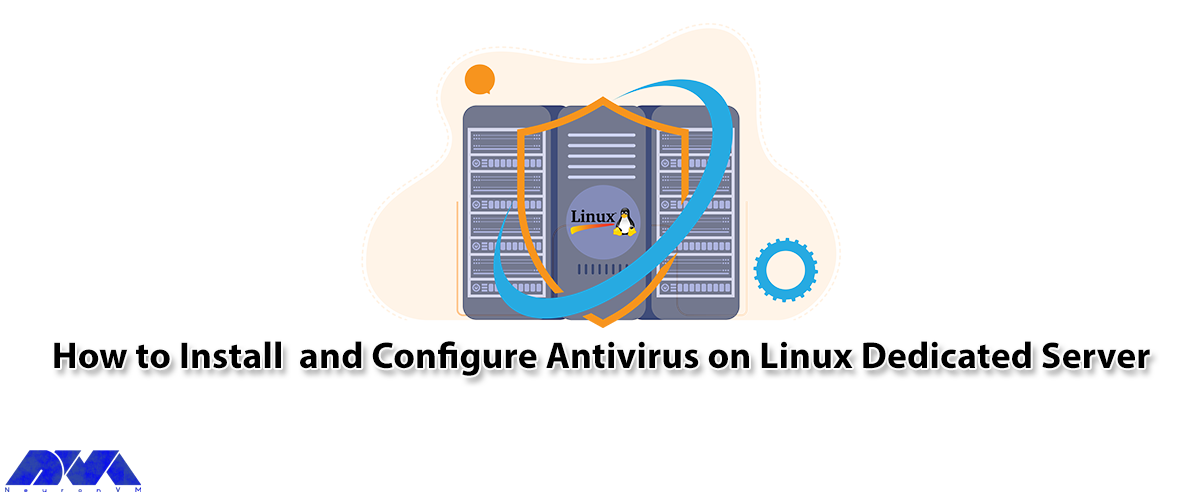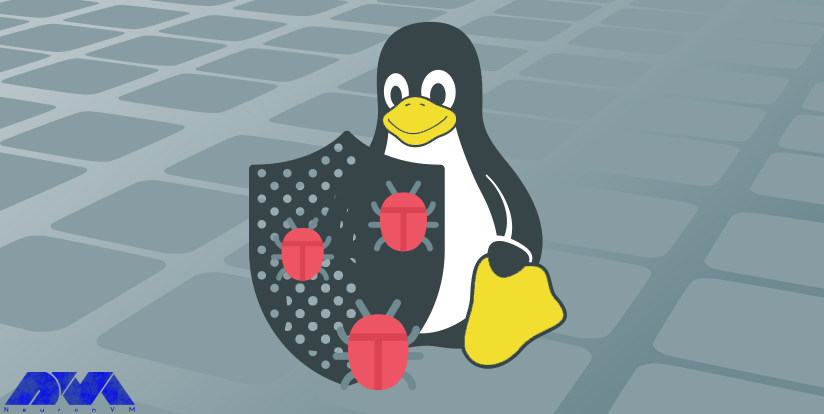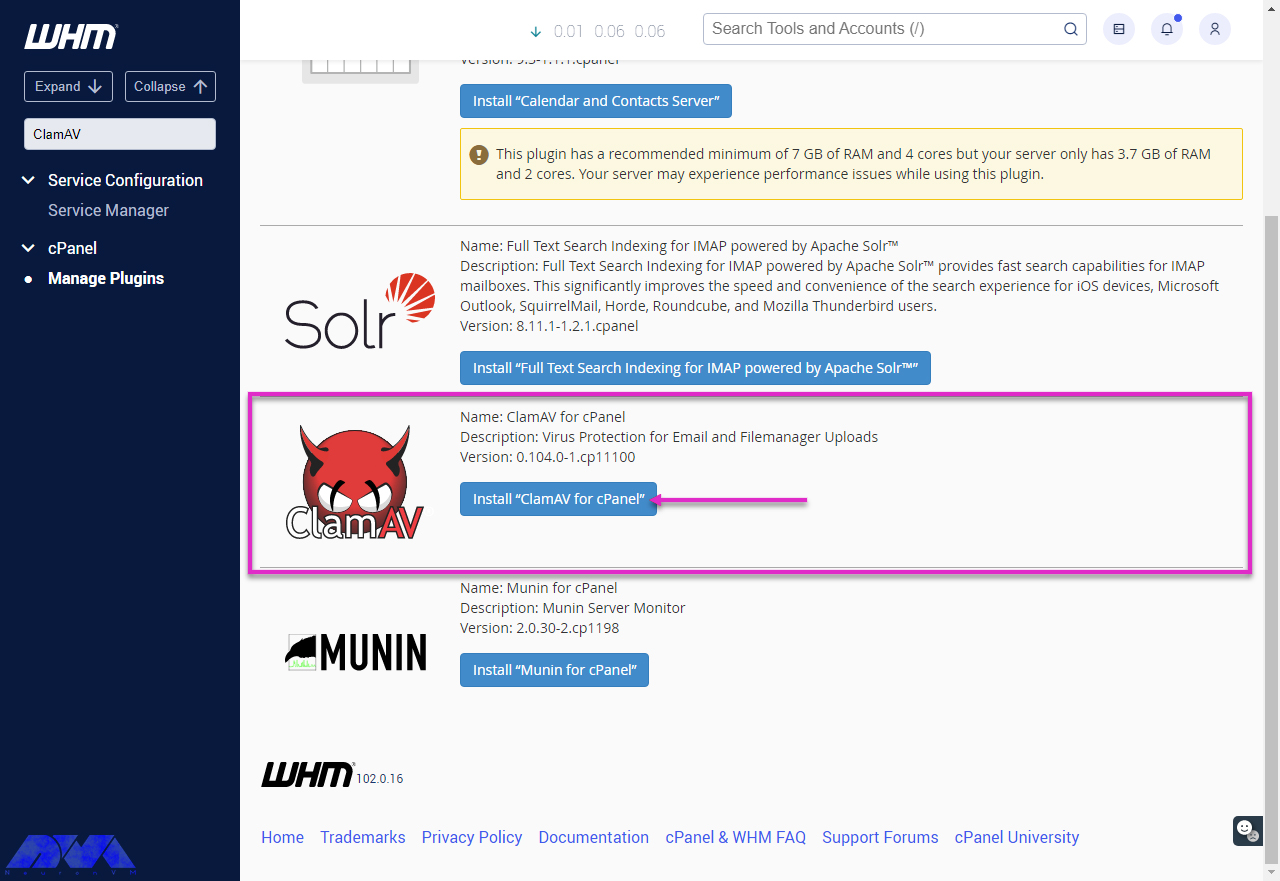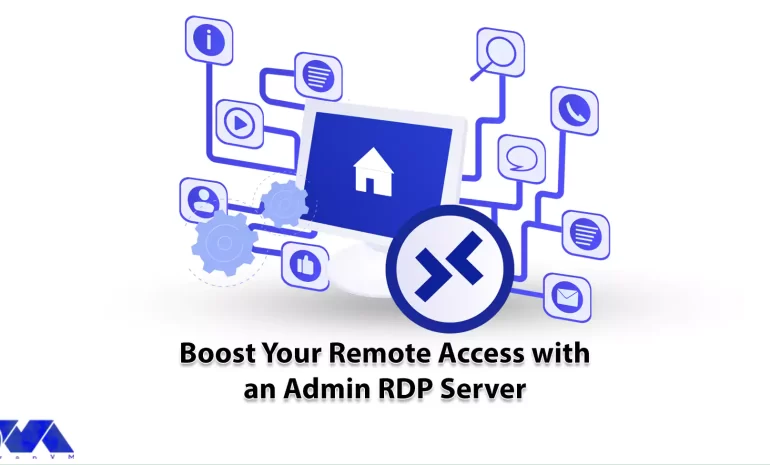






If you are worried about the penetration of viruses, malware, exploits, or shell scripts into your system, then you should do it. For this, there are tools and antivirus software for your Linux system’s WHM panel that you can use to scan your damaged content. After reading this post you will learn How to Install and Configure Antivirus on Linux Dedicated Server.
In this article, we will teach installing antivirus on CentOS, Ubuntu, and Debian distributions of Linux dedicated servers. To do this you can use different antivirus software the most popular among them is ClamAV which is an open-source solution against security threats. So follow the instructions here to secure your system.

– A Dedicated Server (We recommend you visit the Cheap Dedicated Server plans presented on our website and choose a plan.)
– Install cPanel on Dedicated Server
First, you should know that ClamAV is not prepackaged on CentOS. Therefore, we need to add a repository (epel) by running “Yum” commands in the order:
sudo yum -y install epel-release
sudo yum clean all
Now, you are ready to install ClamAV on the CentOS operating system. So, use the following command line:
sudo yum -y install clamav-server clamav-data clamav-update clamav-filesystem clamav clamav-scanner-systemd clamav-devel clamav-lib clamav-server-systemd
Here you can find the steps to configure ClamAV on CentOS. But before configuring the first step is to remove the example string from the configuration:
sudo sed -i -e "s/^Example/#Example/" /etc/clamd.d/scan.conf
Now it’s time to specify the type of server. Open the configuration file using your text editor (here is nano):
sudo yum install nano -y
Then, open the ClamAV configuration file:
Sudo nano/Etc/cmd.d/scan.confYou should find the line below :
#LocalSocket /var/run/clamd.scan/clamd.sock
On the command below, remove the example string from the ClamAV fresh clam update configuration file:
sudo sed -i -e "s/^Example/#Example/" /etc/freshclam.conf
At last, use this command to run the ClamAV database update:
sudo freshclam
Then you can run and boot the Clam service:
sudo systemctl start clamd@scan
sudo systemctl enable clamd@scan
In this section, we are going to show how to install ClamAV antivirus on Ubuntu or Debian. Since the installation process and commands are the same in both operating systems, we will examine the instruction as follow.

In both operating systems, use the command line below to update your system:
sudo apt update
Now, go to the installation process using this command:
sudo apt install clamav clamav-daemon
To check the installation status, you can run the command below:
clamscan --version
To configure ClamAV on Ubuntu or Debian follow the commands below:
First, you should stop the daemon to update the ClamAV database manually and then Usenet command to update:
sudo systemctl stop clamav-freshclam
sudo freshclam
The next step will be to download the latest database signature file by the command below:
sudo wget https://database.clamav.net/daily.cvd
Copy the file to the required directory with the related command:
sudo cp daily.cvd /var/lib/clamav/
In the end, start the fresh clam daemon using the following command:
sudo systemctl start clamav-freshclam
That’s all! Here we tried to teach how to install and configure antivirus on Linux dedicated server. Now you can safely use and protect your system. We hope you enjoy this article. Don’t forget that if you own a Linux dedicated server, you must install an antivirus to protect from danger and malicious files. For any question leave command.
Yes, Operating systems do need antivirus protection. Linux is really safe among other operating systems but it can also be affected by malware and viruses.
It’s not recommended.
How useful was this post?
Click on a star to rate it!
Average rating 3.3 / 5. Vote count: 6
No votes so far! Be the first to rate this post.
 Tags
Tags

In order to have a better understanding of admin RDP, it can be said that admin RDP is part of a lar...



 Tags
Tags

Running a Minecraft server can be a rewarding experience, but it requires time, effort, and possibly...



 Tags
Tags
What is your opinion about this Blog?








